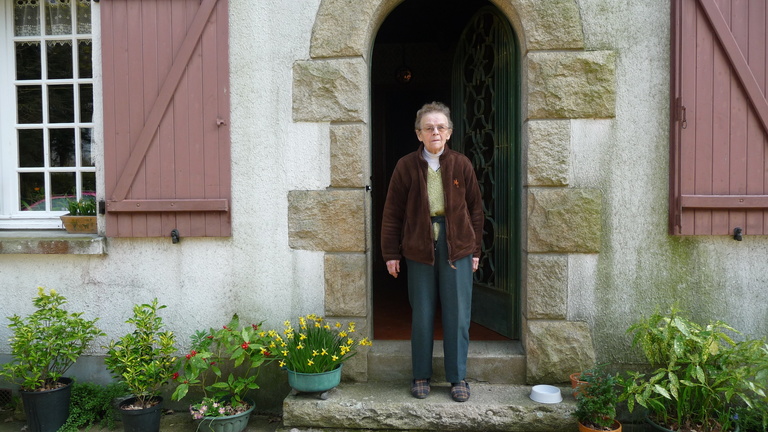
Senior mobility
Improving the experience of train travel, to keep the elderly moving
Mobility
Seniors
Design
Experience
Mobility is one of the factors enabling people to remain self-reliant and stay in touch with others. This social dimension of mobility is central for the elderly, who feel at risk of being isolated and relegated in society. Mobility in all its forms, including routine outings, day to day commutes, tourism is booming while the population is in the same time ageing. Combine these two trends and it’s easy to see why senior mobility is one of the most vital aspects of ageing well. Méthos studied senior mobility in trains for SNCF, the French rail operator, as it was planning to upgrade services for the elderly on its long-distance and commuter lines.
• 45% of people over 70 say they feel uncomfortable or physically limited in their travel.
• 45% of people over 70 do not take public transport due to the lack of last-kilometre services.
• 14% of people aged 75 to 85 do not leave their home for a week or longer.
Source. Institut français des Seniors
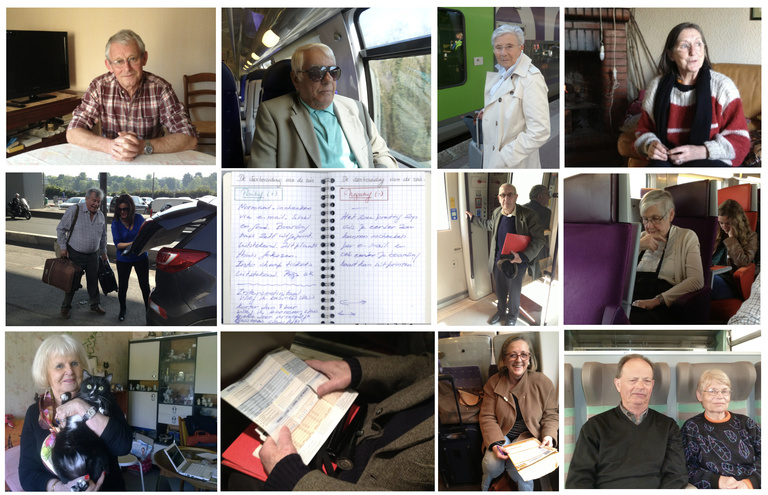
An ethnography of seniors on the move
To understand the stakes and challenges associated with mobility for seniors, and identify pointers and levers to facilitate it, we followed an ethnographic method, i.e. participant observation. The approach is geared for describing a phenomenon in its full complexity as it looks beyond the participants’ discours, which often differ from real-life practices and feelings in transport. The goal is to carefully dissect the practices unfolding in a given situation, such as printing out a train ticket, moving around a station, climbing onto a bus, knowing where to get off, going up and down stairs, moving around with luggage, finding your way around an unfamiliar station, etc.

We travelled with more than 60 elderly men and women, starting at their front doors in three French regions (Brittany, Rhône Alpes and Greater Paris). Their ages ranged from 60 to 85, some of them were mobile and others had difficulties moving, some lived in city centres, some in the suburbs and others in the countryside. They also travelled to train stations and airports in various ways. The ethnographic study, the visuals and first-hand accounts documenting the findings, were part of a broader innovation journey at SNCF aimed at identifying levers, new solutions and service experiences that would enhance or foster mobility among the elderly.
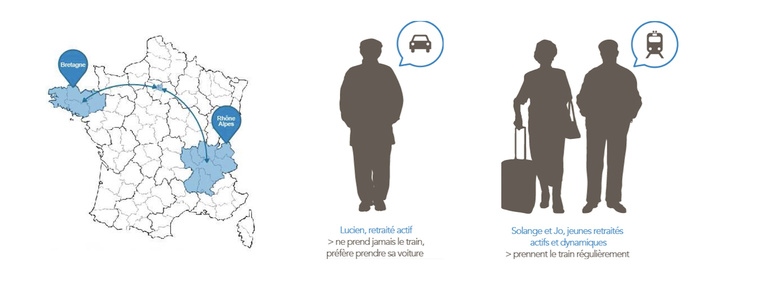
"Catching a plane is easier than taking a bus or crossing Avenue de l’Opéra in Paris."
Jean, 80 years old

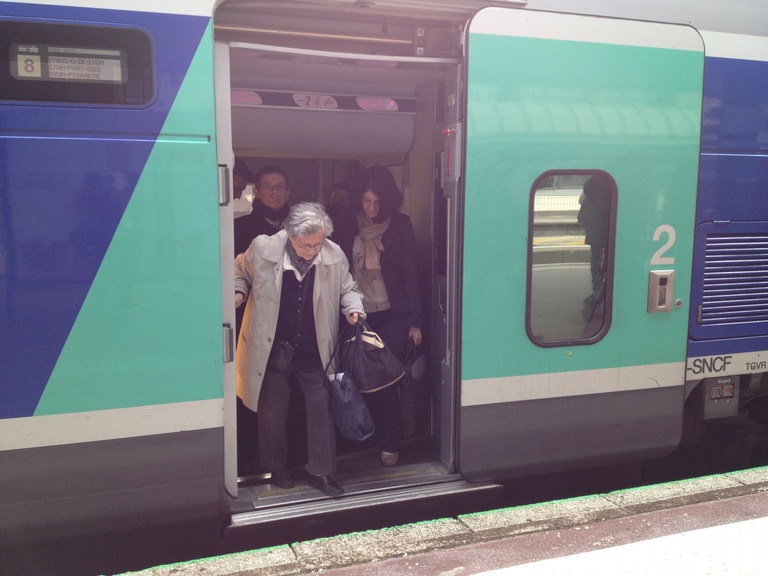
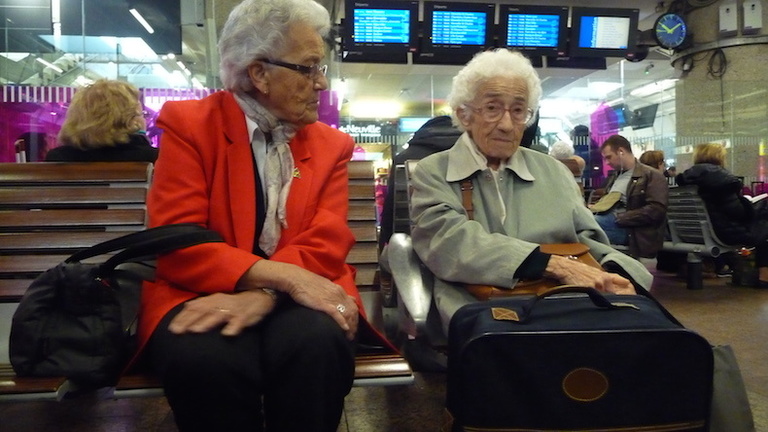
Seniors? There’s more to it than that
The term “senior” doesn’t quite capture the full array of profiles and experiences of people aged 65 and up. Age is a relative criterion: people can be fully mobile and travel cross-country on a regular basis at 80, whereas others can be held back by physical limitations at age 65. The category “retired” is also misleading because as who have retired from their professional lives are sometimes more active and mobile than before..
But they all have at least one thing in common: they want bearings and plan ahead for every possible contingency in their journey, they are less “adventurers” in this age group.
The Swallows & the Owls
Seniors perceive and experience travel in different ways. So, to help SNCF’s innovation teams fine-tune their plans and prototypes for new services and offers, Méthos broke down elderly travellers’ behaviour patterns, wants, needs and expectations into two main categories and profiles: Swallows and Owls.

Swallows and Owls are caricatures (ideal types as Max Weber put it) that simplify and systematise objects’ or people’s traits to characterise them more clearly.
Swallows and Owls move in different ways: swallows migrate across long distances when owls withdraw into solitude. Elderly swallows travel whenever they feel like it or when an opportunity comes up. The seniors in the “owl” category move around less, do so in a smaller universe (their neighbourhood, perhaps their region), socialise less, and traveling is a bigger effort.
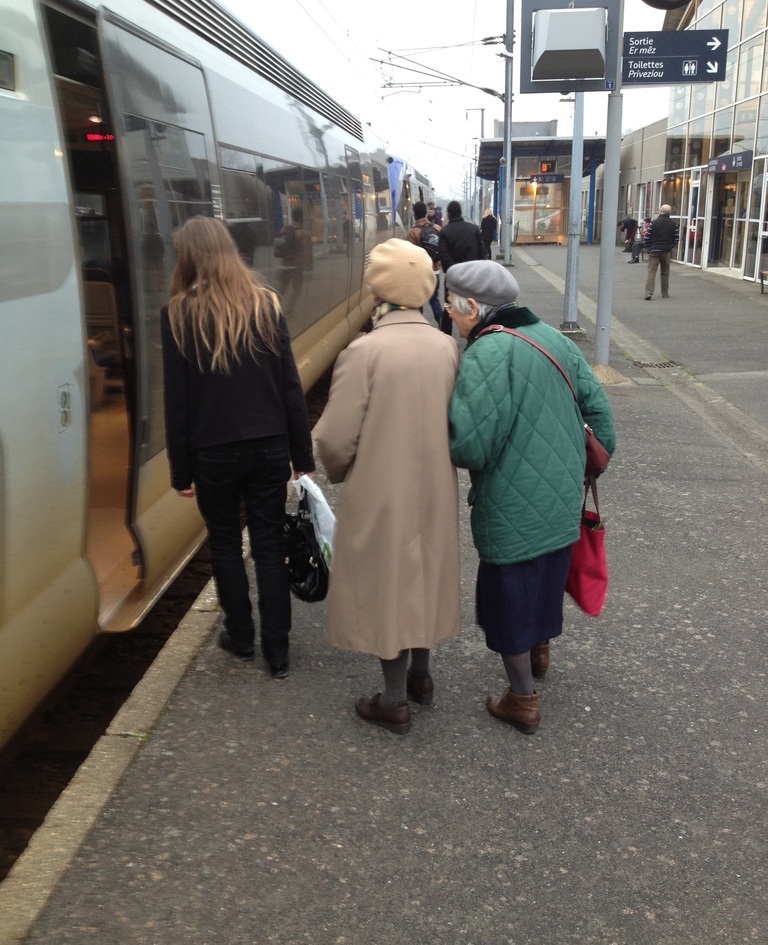
"I’ve been afraid of escalators since I saw someone fall backwards. It’s not always easy to place your foot on the right step."
Heidi, 70 years old
A starting point for innovation
SNCF is a public company and as such has a duty to cater to elderly people’s mobility requirements and keep the risk of isolation at bay. Travelling cross-country by train with the elderly helped us understand exactly what journeys mean to them, the hurdles they have to negotiate, the problems they run into, what they expect and what they need. Our observation and analysis of their behaviour ultimately enabled SNCF to build a knowledge base on senior travellers, which continues to guide the development of services and facilities for seniors on the move.

Read:
• How the adaptation of travel practices among very elderly people modifies their identity Academic paper by Jean Bapstite Welté, Senior Partner at Méthos.